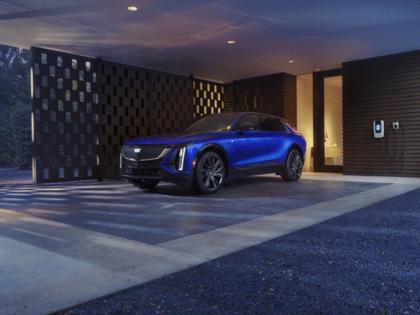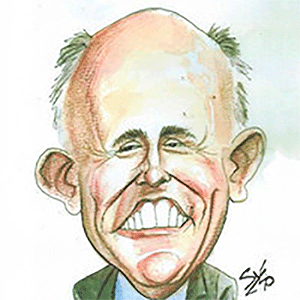GM could find opportunity in chaotic European market with EV play
Published in Business News
DETROIT — General Motors Co. is pushing ahead with its reentry into Europe using a direct-to-consumer electric-vehicle sales model despite a slumping market there — and experts contend the play could pay off for the Detroit automaker.
GM started selling the Cadillac Lyriq EV in Europe last year and has opened what it calls Cadillac City experience centers in Paris, Zurich, Frankfurt and Hamburg, Germany. With Pere Brugal as the new GM Europe leader, the company also plans to sell the 2025 Cadillac Optiq EV SUV in Europe.
As legacy automakers there battle weaker demand for electric vehicles and internal combustion engine vehicles and stiffening competition from low-cost Chinese rivals, GM is deepening its presence in Europe. The difficulties in Europe and China forced Volkswagen AG to post a 42% decline in operating profit for the third quarter, prompting the automaker to ask its workers for a 10% pay cut to help the company remain competitive.
And in a historic shift, the German automaker's labor chief said last week VW might close at least three German factories and lay off thousands in other facilities — effectively voiding a 30-year no-layoffs agreement with German labor.
Into this market maelstrom steps GM, which sold its European operations in 2017 after 90 years of operating in the region. Still, experts suggest that since GM appears to want to keep its European operation niche by selling only EVs there, the decision to press ahead comes with less risk and perhaps could lead to more upside for the automaker.
"Chaos creates opportunity, and that's how GM is approaching this," Wedbush Securities analyst Dan Ives said. "There's a lot of competition and tumble in the European market, and given where GM is on their EV and overall hybrid strategy, it's the right time to try some new growth initiatives ... especially right now. Chinese players are having a tough time getting into the (European) market because of tariffs and geopolitical (concerns), so there's a little window of opportunity that they can go after."
But there are skeptics because of GM's previous struggles in the European market, where it sold mass-market models for nine decades. Seven years ago, GM CEO Mary Barra said the automaker would exit the market by selling its Germany-based Opel and United Kingdom-based Vauxhall businesses to Groupe PSA of France, which has since merged with Fiat Chrysler Automobiles NV to form Stellantis NV.
"I think it's too late, and they will fail or just sell small volumes," said Ferdinand Dudenhöffer, the director of the Center Automotive Research in Bochum, Germany, and a longtime watcher of GM in Europe.
GM's return to Europe
GM reentered Europe by starting sales of the Cadillac Lyriq online and out of its experience center in Switzerland in October 2023. The move came after Barra in 2022 started talking about the potential the automaker saw in Europe, where EV penetration rates exceed those in the United States..
"All I can tell you is I think it’s a huge growth opportunity for the company, and we’re excited to be back," Barra told the Associated Press in July 2022.
In December 2023, GM expanded to selling the Lyriq in the Swedish market and the following spring continued its expansion with the opening of a Paris store. In late September, GM announced the addition of the Frankfurt and Hamburg stores and the expansion of its European service network to 26 locations across Germany, Switzerland, France and Sweden.
In the third quarter, GM reportedly sold 1,000 vehicles in Europe, according to financial filings. Year to date, the automaker has sold 2,000. But GM doesn't have plans to establish a manufacturing facility in Europe, GM Europe spokesperson Chaiti Sen told The Detroit News.
"The only way you're going to have serious volume in Western Europe is to build in Western Europe, period," said Warren Browne, an auto supplier consultant and former GM executive in Detroit and Europe who worked at the carmaker for 40 years. "You have to build there. Otherwise, you're just considered a niche player. And unless you're in every market, you're really a niche player."
Sen added GM's direct-to-consumer model in Europe is "key to staying closely connected with our European customers and immersing them in the Cadillac brand experience. By managing our sales channels directly, we’re able to gather valuable insights and adapt quickly to meet customer needs. This approach not only builds strong, lasting relationships but also provides a personalized experience tailored to local preferences — a cornerstone of Cadillac’s long-term success in Europe."
GM hasn't said if it plans to sell Chevrolet, GMC or Buick EVs in Europe at some point.
"When it comes to Europeans — design, performance and technology are incredibly important, and Cadillac is our flagship brand that combines all these aspects artfully into all its vehicles," Sen said.
Part of the reason that GM left Europe is the difficulty of affordably maintaining regulatory compliance there and in the United States at the same time, noted Stephanie Brinley, principal automotive analyst at S&P Global Inc.: "It just became too expensive to support both. With an EV, you don't have that issue."
If GM can get back to Europe with EVs and sell more, "it's a good move," Brinley said. "If they manage it carefully."
The state of the market
Auto demand in Europe has been tempered by a weaker economy. Last week, the European statistical agency reported the euro zone grew 0.4% in the third quarter compared with the previous quarter, keeping Europe's growth behind the United States. The U.S. economy grew at an annual rate of 2.8% in the third quarter on the back of increased consumer spending, the U.S. Department of Commerce reported last week.
Demand in Germany, Europe's largest auto market, has slowed with rising prices, especially with increased energy costs caused by Russia's war with Ukraine. Germany's economy dodged a recession when the economy grew 0.2% in the third quarter after contracting in the previous quarter.
"This is still far from what we need, but at least it is a ray of hope," Economy Minister Robert Habeck said, Reuters reported. "The economy is proving more robust than previously forecast, and the technical recession expected by many has failed to materialize."
New EU vehicle registrations continued a downward trajectory in September when they declined 6% year over year, according to the European Automobile Manufacturers’ Association (ACEA). The market saw negative results in all three of the region’s four major markets: France was down 11.1%, Italy 10.7% and Germany 7%. Spain rebounded with a 6.3% increase.
While EV registrations increased 9.8% in September, year-to-date market volume was 5.8% lower than the same period last year, according to the ACEA. EV total market share fell to 13.1% from 14%, with a substantial decrease in Germany of 28.6%. Europe's EV sales have declined with the ending of some EV subsidy programs, specifically in Germany. The government announced the end of the program in December 2023 as a way to trim the budget.
Europe "is in a very bad position," Dudenhöffer said. "Germany as a whole has a big problem, so the performance of Germany is very bad. We have no strategy. We do just actions and actions and actions of our government, and it makes no sense."
In September, automakers in Europe called for "urgent action" by the government with EV sales declining even though the EU still has stringent emissions standards coming.
"The zero-emission transition is highly challenging, with concerns about meeting the 2025 CO2 emission reduction targets for cars and vans on the rise," the ACEA board wrote. "The current rules do not account for the profound shift in the geopolitical and economic climate over the past years, and the law’s inherent inability to adjust for real-world developments further erodes the competitiveness of the sector."
To handle the concerns with lower-cost Chinese competitors, the European Union last week finalized tariffs on imported Chinese battery electric vehicles. The tariffs differ by company, including a 17% duty for BYD products, 18.8% for Geely and 35.3% for state-owned SAIC.
A recent report by McKinsey & Company noted that year-over-year EV sales in Europe increased an average of more than 50% from 2020 to 2023, and even with recent declines, "the region’s long-term prospects for electrification remain strong."
Still, "whether Europe can replicate its expertise with ICE vehicles in a fully BEV future is uncertain, but if it is unable to seize this opportunity, its auto industry could be headed for long-term disruption if current trends accelerate," the report states, highlighting the importance for European industry leaders to fulfill the promises made to support the transition and prevent economic losses that would be seen if new entrants "continue to capitalize on their competitive advantages and challenge European OEMs on multiple fronts."
From GM's perspective, "the move to EVs is undeniable," Sen said, given the "strong government commitments across Europe to reduce emissions."
"Many European markets are advancing their electrification journeys, and our all-electric strategy aligns with these shifts, supported by record global investments in EV technology," she said. "Our focus on design, technology and battery range meets the top priorities of premium EV customers, making EV adoption more attractive."
©2024 www.detroitnews.com. Visit at detroitnews.com. Distributed by Tribune Content Agency, LLC.












Comments